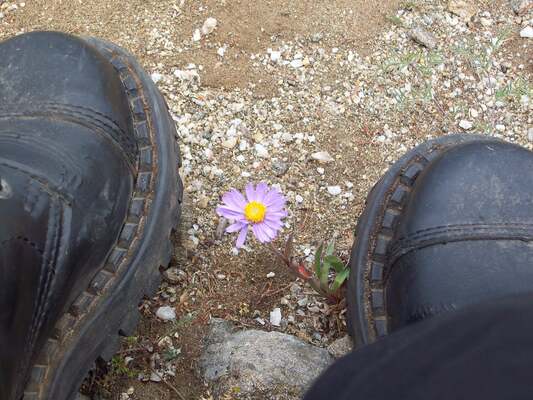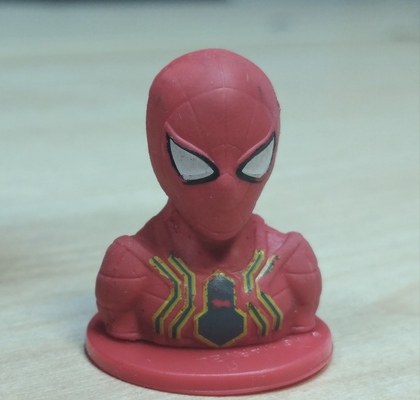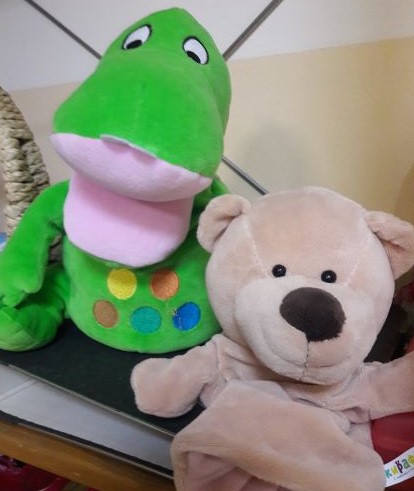
I would like to dedicate this post to my trainees on the IH VYL course because it was during the coversations with them, during the session and after the session, during the tutorials and the informal chats on Whatsapp that this article took shape.
The set-up
Imagine: you plan your class, you get the materials ready, you enter your little kingdom and then things happen. They are the things you do not approve of, things you don’t like, things that should not be happening, things that get in the way of learning English. Or, in other words, as Harold Macmillan said ‘Events, my boy, events’, my favourite line of this week or even this whole month (courtesy to Edward).
The number of things that can happen is somewhere around… a few hundred and, naturally, it is simply impossible to put them all into a manual for teacher, with all ‘what to do’s and what not to do’s’. There are too many of these and there are too many variables that will be playing a part and adding the local colouring. Here, it is not the case of ‘one fits all’. Oups.
One thing is certain, the problem is not just going to go away, it is not going sort itself out. Whatever ‘unwanted behaviour’ is taking your lesson apart, it needs to be dealt with.
Here are a few roads to take.

The worst solution ever? Doing nothing.
Simply because it not a solution at all. The problem (whatever it is) is not going to simply go away, disappear or un-happen. Pretending that it hasn’t happened and moving on, in an attempt to save the activity, the game or the entire lesson, can only lead to even more serious consequences.
The unwanted behaviour needs to be acknowledged and stopped because it can escalate and compromise the well-being and safety of all the people present. So, do something! Perhaps one of these things that you can find below.

Signal
The simplest way of doing it will be calling the student’s name but using a voice that is appropriate to signal the unwanted behaviour. The tone of the voice on its own should convey the message that something undesirable is taking place and that it needs to stop. This, of course, does not mean raising the voice or shouting but if the teacher uses the same ‘happy’ voice for praising and for disciplining (or ‘disciplining’), the message will be much more confusing for the kids. Instead of ‘Oups, I’d better stop‘, the child will think ‘Oh, look, my teacher is saying my name in such a nice way. She must really like me‘.
In the same vein, long speeches, in L1 or L2, will be counter-productive in such a situation. It is much better to keep it short, for example ‘No!’ or ‘Stop, please!’, used together with the child’s name and a gesture. And, as soon as the unwanted behaviour finishes, also acknoledge it, perhaps with a smile and a ‘Thank you’.
Very often and with a majority of things that can happen in the VYL classroom, this approach should do, if applied consistently. After all, kids know that we don’t run, we do not push the others, we do not take their toys and so on. In most cases, such a gentle reminder, a speed limiter of sorts, will do the job.

Pause
Sometimes, these kinds of signals are not enough, however and it might be necessary to pause the lesson and deal with the problem in the open, either because more than one student is involved and / or because everyone can learn from it. This might be a situation when more than one child has done something to upset another (ie draw on their work, take their toy, say something) or when there is more than one child involved in any unwanted activity (hiding under the table, pretending to be a very angry dinosaur, hitting the class puppet, drumming with the markers on the table). All these situations do affect everyone present, not only the two students actively involved, and they need to be dealt with in the open.
‘Stop’ is still going to be necessary but it is going to work only as the first step. If there are any resources that contribute to the mayhem, they need to be taken away, for example these markers used to drum on the table. Then, a conversation.
It is very difficult to recommend something that will work in all the situations and all the contexts. Ideally, this part would be done in the children’s L1, but not all the teachers out there speak their little students’ language and not all the schools out there approve of the teachers using the L1 in the classroom.
Now, in Russia, I have the advantage of being able to understand the L1 of my students and what normally happens is we have these conversations in two languages: I speak English and my kids react in Russian, but it was not always the case. Like many of my colleagues in the VYL classrooms around the world, I had to do my magic only in English.
To be perfectly honest, it is not easy to grade the language to the level of pre-A1 and, at the same time, to convey the message in a delicate and sensitive way, but it is not impossible. You can use simple sentences and draw the children’s attention to the fact that their behaviour may make other students unhappy (‘Look, Sasha is sad now’) or that their behaviour is not appropriate (‘Is it a good idea?’). There are some advantages here, as it is almost guaranteed that these conversations will be short and concise and this is how I have dealt with all the issues in my classroom in the past couple of years. Although, to be perfectly honest, sometimes I am sorry that I cannot just sit down and have a real conversation in my students’ L1.

Be clever
There are many tricks that the teacher can use in order to manage the behaviour of the group and of the individual students, without interupting the lesson too much but dealing with the problem effectively. Here are some of mine
- Almost magically remove or stop the catalyst or the distractor, for example, put the hand at the back of the stool to block it and to stop the child from rocking, put the marker on the top of the board or on the top shelf
- Use the command ‘Freeze’ to physically pause all the class proceedings and in a game-like way stop the unwanted behaviour. Although, of course, the teacher needs to introduce the game first. Once the kids got involved in something else, the disaster has been averted and the teacher is again in charge, the lesson goes on, according to plan. It might be the best solution for all the difficult situations when the world really does begin to fall apart and a quick fix is necessary. Instead of a conversation with the kids, a thorough analysis of the situation and looking for answers and the steps that need to be taken in the future.
- Create a diversion and draw the kids’ attention to something else – a song (the easiest one to implement), a video, a favourite puppet. Again, as soon as the kids have calmed down, proceed with the lesson. And then take a moment to reflect on what led to the difficult situation.
- Become the class clown and joke your way out of it. A funny face will do, a silly, clumsy gesture and a well-faked horror at the crayons that spilled out of the box. Then, like in most of the situations above – proceed, reflect and change.
- Depending on the situation, it might be a good idea to whisper some encouraging message into the student’s ear. It can be in English, it can be in the child’s L1, it might a real whisper or a 5-year-old whisper (a good attempt that everyone present hears anyway). It will help to redirect the emotions, break the spell of sadness or anger, and it will help them to focus on something else and it works really well with the situations in which a child is upset or sad or just withdrawn, for whatever the reason there might be. It might be also a good idea to play a quick round of Broken Telephone with everyone, to involve the whole group in the same activity but it will work only if the kids already know the game.

Praise
There are situations when the best way of dealing with the unwanted behaviour is a complete diversion when instead of addressing the offender (apart from the basic signal and calling to attention), the teacher can choose highlighting the fact that the other children behave well.
Not only will it work well for the behaviour that is aimed at drawing the teacher’s attention (since the teacher is withdrawing this attention) but it will also acknowledge and applaud the behaviour of the class which is something that we often forget to do, taking those ‘angels’ for granted. Although, truth be told, they deserve our recognition.
Praising the students and reinforcing their behaviour will be also a clear message and, short-term, it will create a situation when the ‘offenders’ get a chance to reflect on their actions and to calm down and by the time everyone else has already been praised, they will also be closer to the desired behaviour and the teacher will be able to high-five them, too.

Ignore (only not really)
Some disasters are better to be ignored entirely.
Of course, by ‘ignore’ I do not mean here the official Cambridge Dictionary definition of the verb because that is going to get us nowhere good (see above). What I have in mind is a VYL teacher’s (a pre-school teacher’s, a parent’s, a carer’s) definition of ‘ignore’ which, more or less, goes like that: acknowledge that a situation has occurred and, instead of drawing more attention to it, let it sizzle out, while, of course, keeping an eye on the child, paying even more attention than usual, only not openly this time.
Sometimes this will work better than any whole-class conversations or ‘lectures’, especially when we are dealing with a tantrum directed at getting the teacher’s attention hoping for an outcome that will be more favourable (ie we will not sing the song I don’t like, I will get the best sticker, I will be the first one to join the circle) or when two students have had a disagreement (and there are no obvious roles of the offender and the victim or when it is impossible to tell who is who) or when there is obvious resistance from the student and taking the matter further is dragging it into a dead-end street, like in the story here.
It has to be said out loud, it will not always be easy to label a classroom situation as ‘Ignore (only not really)’ because, of course, tens and tens of factors will have to be taken into consideration. Nonetheless, I believe, it is good to remember that this option also exists.

Ask yourself it is a one-off or a regular feature
Or about working with the events long-term.
It is perfectly natural that all, even the most angelic and most well-behaved children, have a worse day, a crazy day, a tired day or a not-such-a-good day. This is the day when their behaviour might surprise their teacher (or, let’s be honest, completely ruin their teacher’s plans for the lesson). But these are the one-off events and it is not even necessary to analyse them in detail.
If, however, such unwanted behaviour happens regularly and repeatedly, it will be necessary to look into it. Is there a pattern? Is there anything specific that triggers that behaviour, an activity, a person, a stage of the lesson? Analysing all these details will help to choose the right solutions to the problem.
Perhaps it is the time to change the routine? Perhaps some games or activities have to be put on hold for the time being? Perhaps the group needs more settlers? Perhaps they need more stirrers? Perhaps it is time to reconsider the seating arrangement? Perhaps it is the time to talk to the parents?
Find out more
It might happen, too, that the self-reflection of the classroom adventures is not enough and that the teacher will have to reach out to the parents because this background information might help to understand what is happening in the classroom and why and, in turn, lead to finding a solution.

Post-post reflections
Classroom and behaviour management is the theme and the focus of session 3 of the IH VYL course on which I have been a tutor for four years now and that is always the session that, according to our trainees, ‘could last twice as long’, because there are so many issues, so many problems, so many tricky situations that the debate could go on forever…
Unfortunately, that is simply impossible. Fortunately, as another trainee commented, to some extent, we deal with the classroom and behaviour management in every session, while discussing craft, songs, stories and literacy so at the end of the course, our trainees are better prepared to manage a group of the little people. Here is one hoping that this post will be helpful, too!
It is my deeply-held belief that by gaining understanding of all the pre-school brain and heart and by trying to see the world from their perspective, we get better prepared to teach and to bring up very young learners and to deal with the classroom and behaviour management issues that might arise.
For that reason I started a series of posts on the blog, in which I describe the real situations from the classroom and how I dealt with them. The series is called ‘Child development stories’ and you can find it here. While a manual with all the potential situations and all the right answers is never going to happen, we can definitely learn from observing our students and from analysing what happened and get better at managing the pre-primary kingdom, on the good days and on the worse ones.
Happy teaching!



